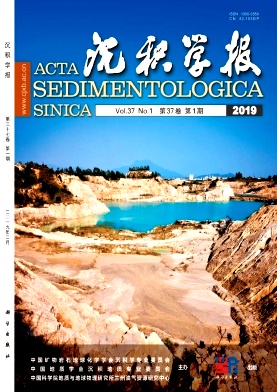Sedimentary Characteristics and Geological Significance of Tempestites in the Fourth member of the Leikoupo Formation at the Hanwang Section, Western Sichuan Basin
doi: 10.14027/j.issn.1000-0550.2018.140
- Received Date: 2018-03-02
- Rev Recd Date: 2018-05-16
- Publish Date: 2019-02-10
-
Key words:
- western Sichuan Basin /
- Hanwang /
- Leikoupo Formation /
- tempestites /
- geological significances /
- depositional environment
Abstract: On the basis of outcrop and thin section analyses, tempestites were identified in the fourth member of the Leikoupo Formation, Hanwang area, western Sichuan Basin. The major markers of storm sediments are scouring fill structures, storm-flow-generated gravelstones, chrysanthemum-like structures and hummocky cross-stratifications (HCS) etc. Three types of storm-deposited sequence were observed, in terms of their lithology, sedimentary position and depositional marks. Type I consists of storm gravelstone and graded members deposited at the lowest part of slopes near the storm wave base. Type II contains a storm gravelstone member, a graded member, a parallel lamination member and an HCS, which is deposited at the uppermost part of the slope near the fine-weather wave base. Type III comprises a graded member and a parallel lamination member, deposited at the platform margin. The depositional evolution of the tempestites shallows upward from the base of the slope to the upper part of the slope at the platform margin. The discovery of tempesites in the study area is highly significant in understanding paleolatitude and paleoplate evolution, paleoclimate change, stratigraphic isochronous contrast, and the sedimentary environment of the Sichuan Basin during the Middle Triassic, particularly the development of the Longmenshan island chain in the Songpan-Ganzi Sea.
| Citation: | ZHAO Cong, LIU ShuGen, SONG JinMin, TANG Xuan, LAI Dong. Sedimentary Characteristics and Geological Significance of Tempestites in the Fourth member of the Leikoupo Formation at the Hanwang Section, Western Sichuan Basin[J]. Acta Sedimentologica Sinica, 2019, 37(1): 94-103. doi: 10.14027/j.issn.1000-0550.2018.140 |






 DownLoad:
DownLoad: